You were right to be worried! There was some serious modeling stuff going on today. It was like cutting the Hope Diamond. One wrong cleave and all you have is worthless diamond dust. Well... maybe not quite that hyperbolic, but there was a significant probability that I could wreck over two week's work and about $25 worth of styrene, and I didn't have more stock to make another one.
Today was a BFD! A milestone day to be sure. I did get the shells split without wrecking them. I found that my hinge idea needed some revision, and I found that I can't use the large kit decking piece.
Let's start with the disection...
I scribed a horizontal line down the center of each side of the bulkhead assembly using my Starratt surface gauge. i supported the straight portion in a jig I made to support my O'gauge locomotices when repairing them. After scribing the line down the center on one side, I rotated the jig, without moving the bulkhead and scribed the opposite side. I was rewarded with two lines on opposite sides. I then highlighted the lines with a fine Sharpie using a straight edge.
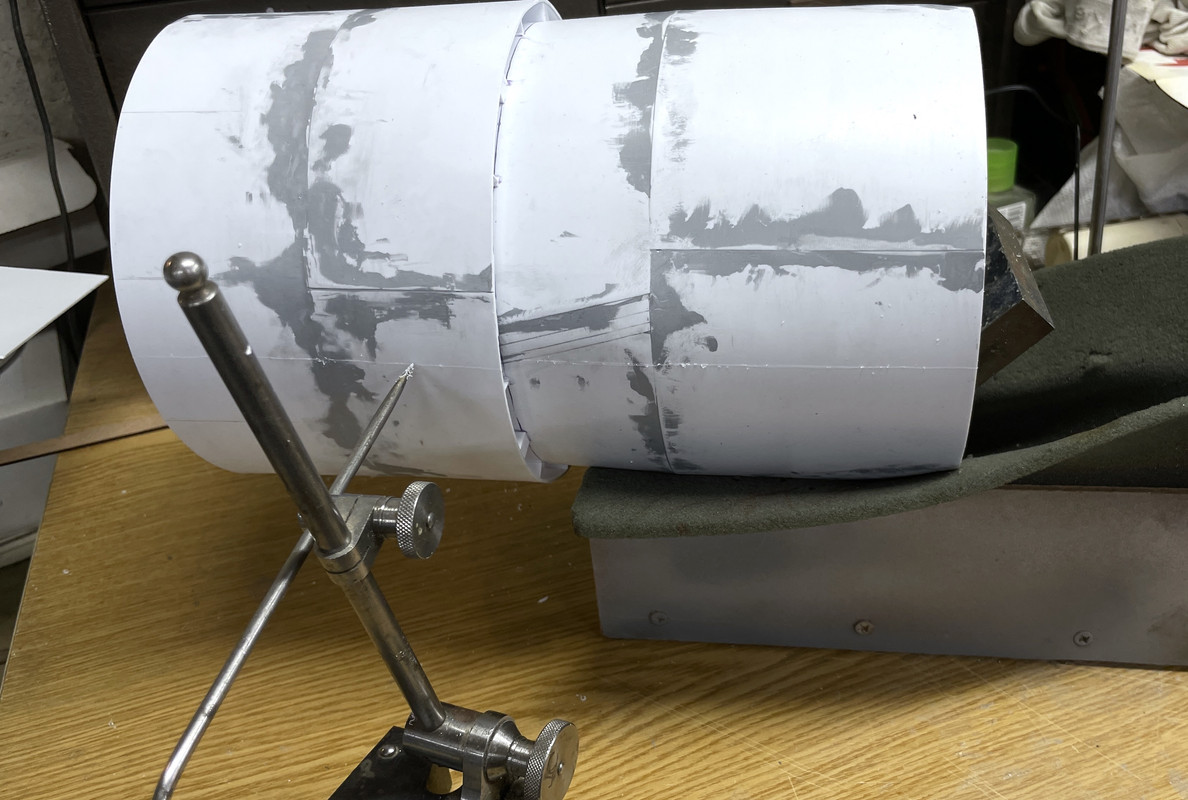
How to separate them. I thought of using a razor saw and quickly dispelled that idea. I had to cut not just the skin, but the inner skins on the doubled portions and all the way through the annual decks. I ended up using a rather large abrasive cutoff wheel intended for cutting steel. When you abrasively try to cut styrene you essentially melt your way through it, but through it I got. The cut was ragged and not particularly straight, but it was within the margin of error and was fixable.

Where the cut occurred where there was no blocking piece right there, the styrene was spreading out. Before cutting the second side, I added new 1/8" stock to bring it right to the cut edge thereby stabiling the edge from further delamination and getting a head start on closing off the edges to simulate the solid armor plating.
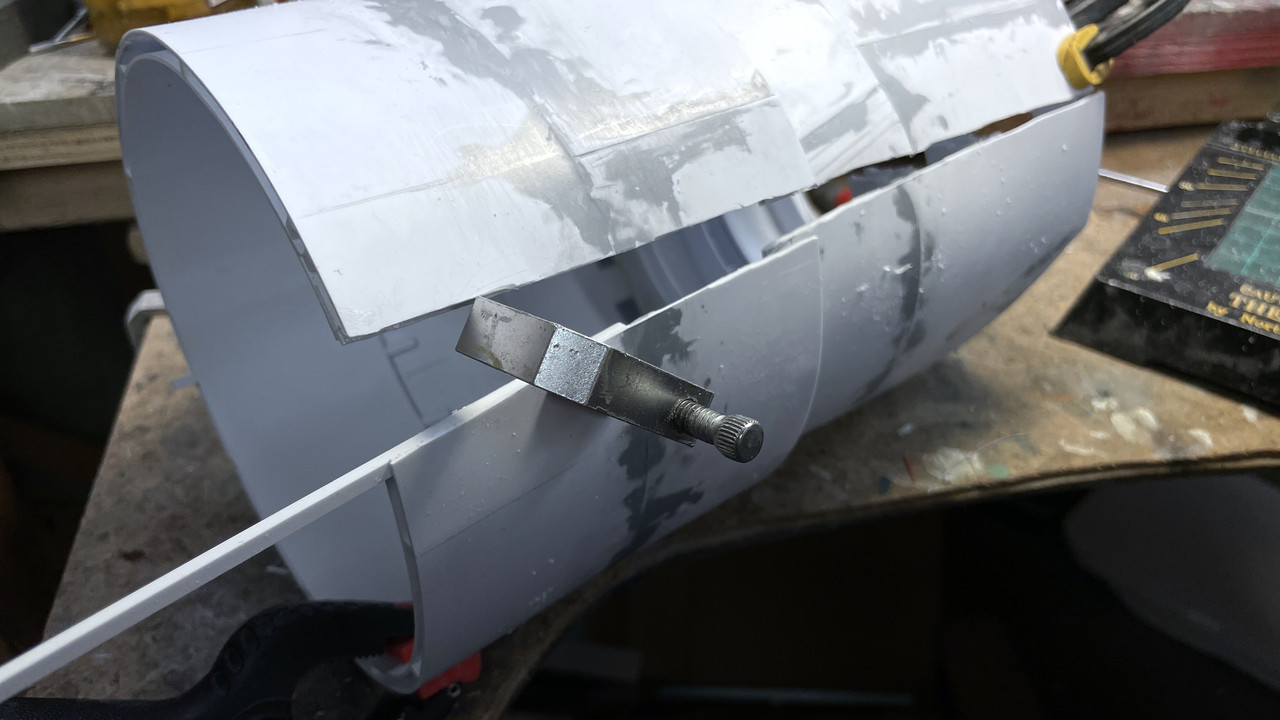
I then cut side two and was presented with two shells that DID NOT COMPLETELY DECOMPOSE. There was some spreading at the exposed corners of the annular decks.

That aluminum clamp was used (among others) to re-secure these edges so I could glue them. I needed solvent cement; tube cement; and thin, med, thick and gel CA to finally get these springy bits to stay put. I do have fears about them holding up in the muesum envvironment and may need to do something else to ensure they stay attached.
On the open shell, the top will be visible and needed to be closed off to simulate the solid armor. I traced the shape onto some styrene and cut it out using the scribe and snap method (as will all the other pieces).
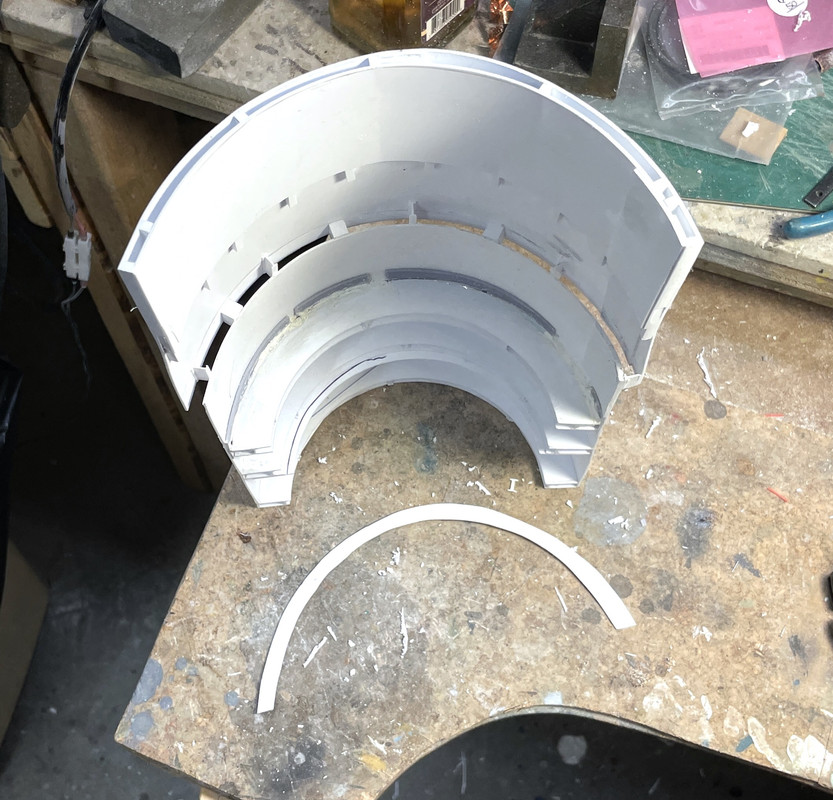
The above picture also shows that the open ends are all filled with stock and sanded flush, but not filled yet. I glued the top strip with solvent cement and held in place with some strips of Tamiya narrow masking tape. This image also shows several other features. I removed the parts of the of the inner-cylinder spacers that were peeking out over the edges of the lower tapered bulkhead to ensure that the ring gear/roller track will nestle in properly. There is also copious amounts of Tamiya filler that will be sanded before painting in the next session.
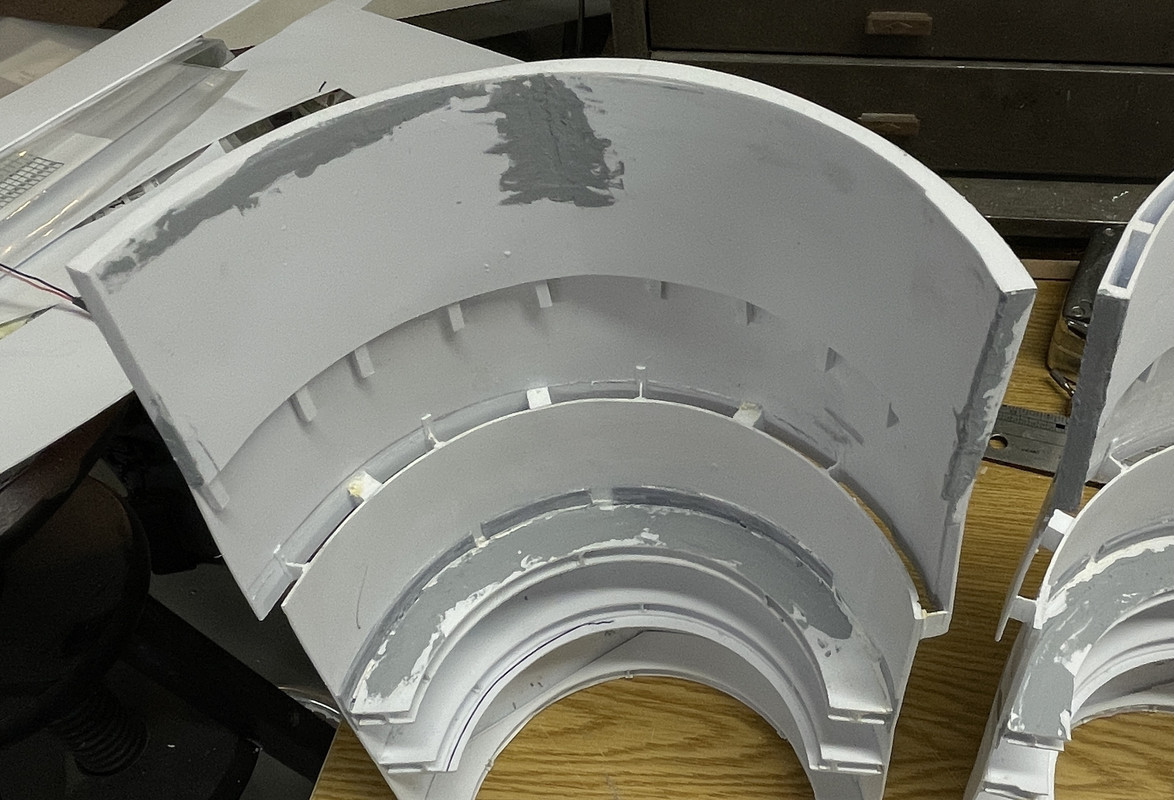
Both shells were now fully filled and rough sanded. Whew!
It was also time to open the last cutaway that would expose the pinion gear area. I assembled the structure with the pan deck and electric deck, rotated the shell to the proper orientation and drew the place the opening would go. I used the Dremel with a carbide router to rough out the hole. It too had to penetrate multiple layers, which I then cleaned with a sanding from on the same Dremel. In this image everything is upside down. Because the armor plate doubling will be on the top of the opening, I don't think it will be visible, but I may fill the gaps with Milliput to make it look solid too.
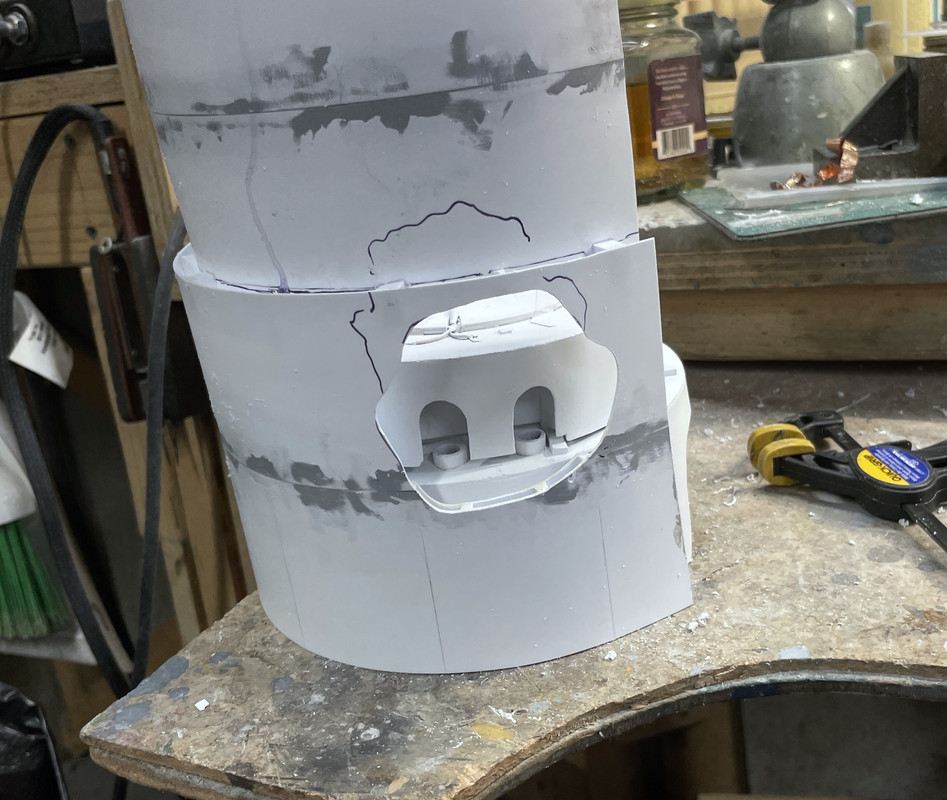
I was finally at a point where I could actually figure out how this was going to go together. I found out that I COULD NOT USE the kit's large deck molding. I was planning on using it, but again, like the rangefinder ears that I didn't draw and therefore didn't include with the width measurements, I didn't draw this part either. And it doesn't work at all. Here's why.
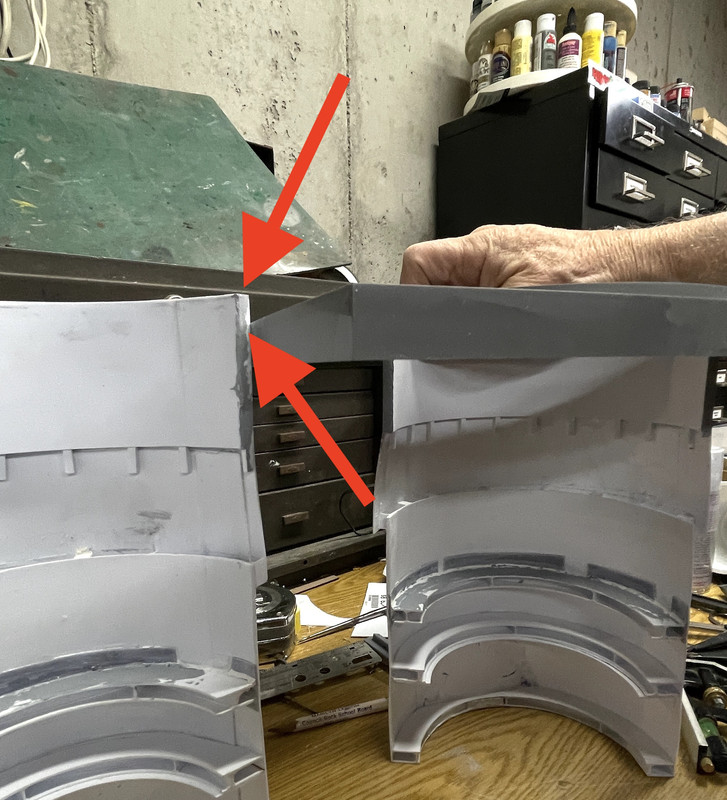
That difference in apparent height, is because the fixed shell slips up inside the raised gun house mounting, but the deck walls and deck and about 1/4" lower. To connect the open shell with the fixed one, I either have to mount the fixed shell lower or cut off the excess on the open one. And both choices create a mess since the bulkhead height is determined by the collective height of the internal decks. This view shows how the deck piece overlaps the shell from below. It looks great snuggled there, but screws everything up.
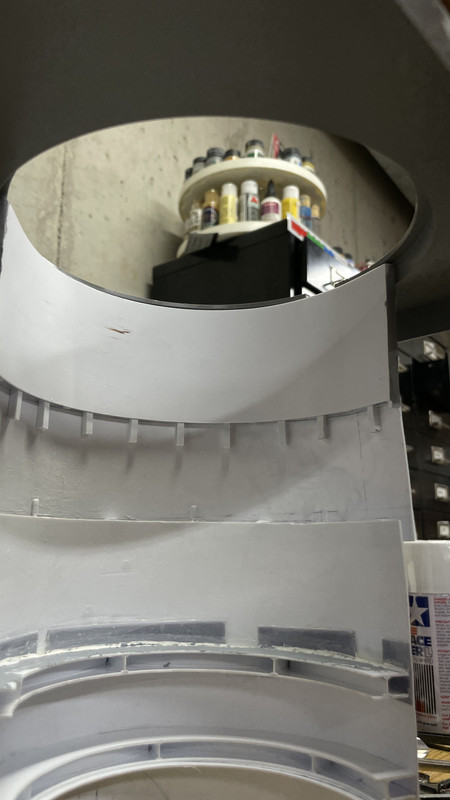
So I'm not using it. I'm going to mount the lower gun house plate directly on the fixed shell and the open shell now aligns perfectly. I may make a flat deck simulation piece. I found out from Ryan Syzmanski today that the teak decking planks are 5" wide. I might want to plank a piece with real wood stained teak... just think'n.
Here are the shells with just the gun house bottom. And it works!

The last thing was to see if my hinge idea worked. It really didn't. It's not wide enough to provide a good mounting surface.
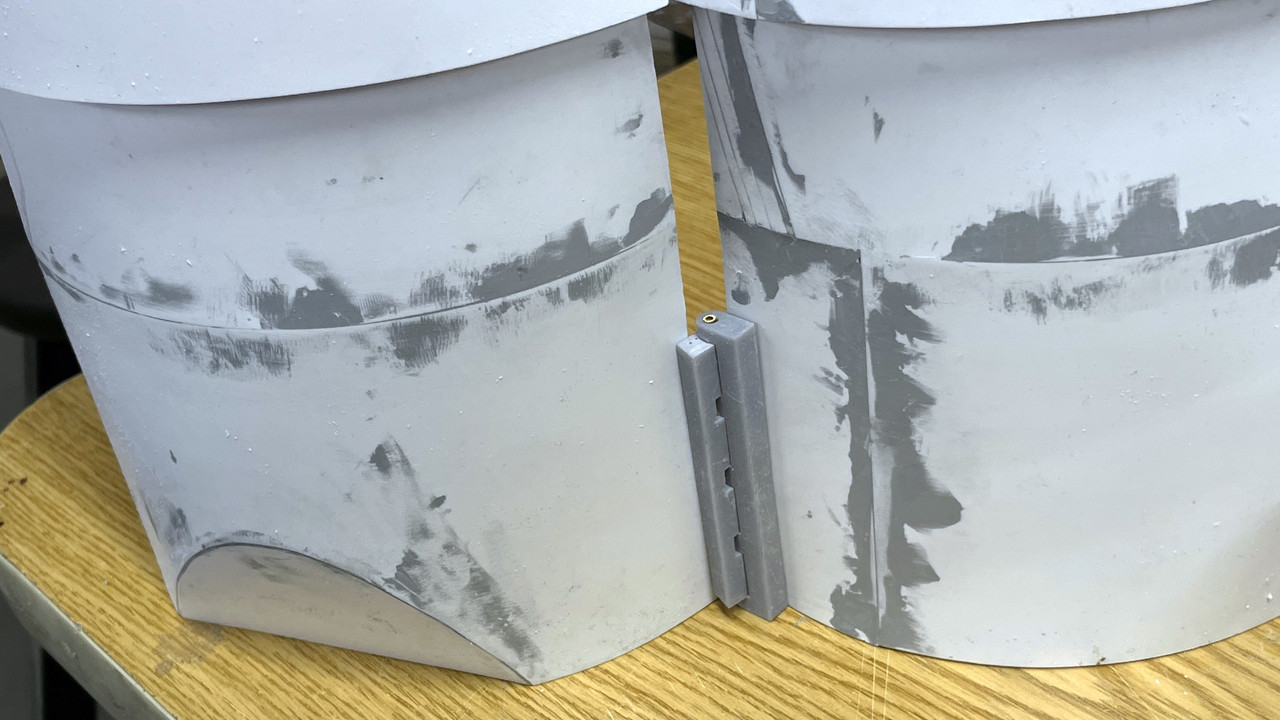
Furhtermore, since these shells are not moving, a hinge is overkill. I'm going to permanently screw the shells down to the baseplate. BTW: the brackets came out well and I will also be mounting them before painting. I'm just going to draw and 3D print an angle bracket that will hold the shells in the correct relationship, and that will be that.
With the shells on their way to completion, all the painting will commence in full. I got a green light to use the spray booth at my wonderful local hobby shop so I can spray the solvent-based paint when the weather isn't cooperating. I've started playing with getting the right shades of gray to paint the apparatus and guns. This is the gun in the un-restored #3 turret and it looks kinda like haze gray to me. I may be able to use it for the guns. For the equipment, I'm going with a darker shade. This is pano that I took. You can see that the door frame is a darker shade than the gun's yoke. I also have to add those ladder rungs you see in the lower left. The gun captain uses them to get up the alcove and out of the way of the maddening 4 foot gun recoil.
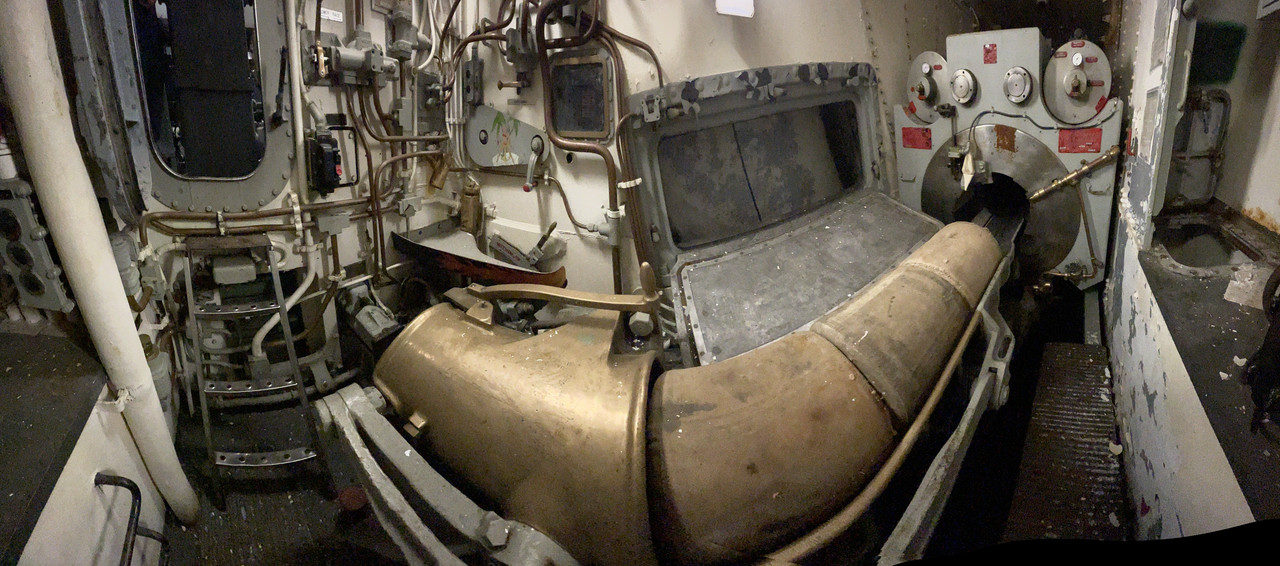
So... like I said. it was a heckuva day. I am very relieved to have the bulkheads done. The rest of the job, while painstaking, will be fun.